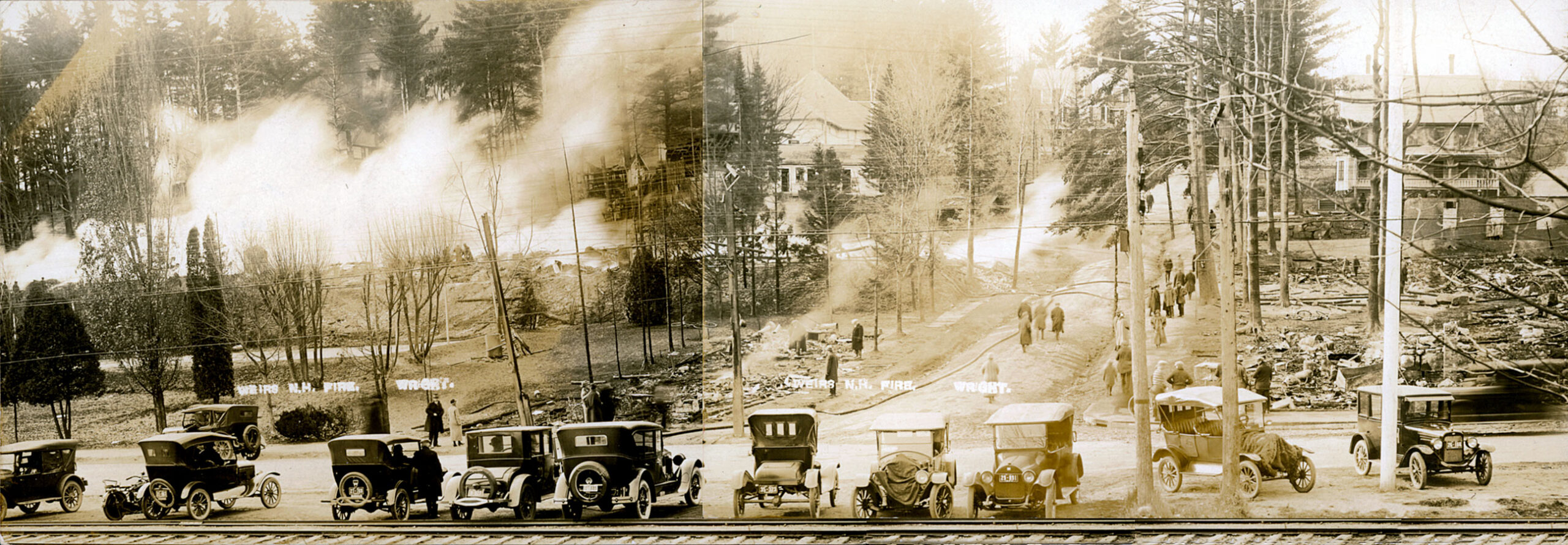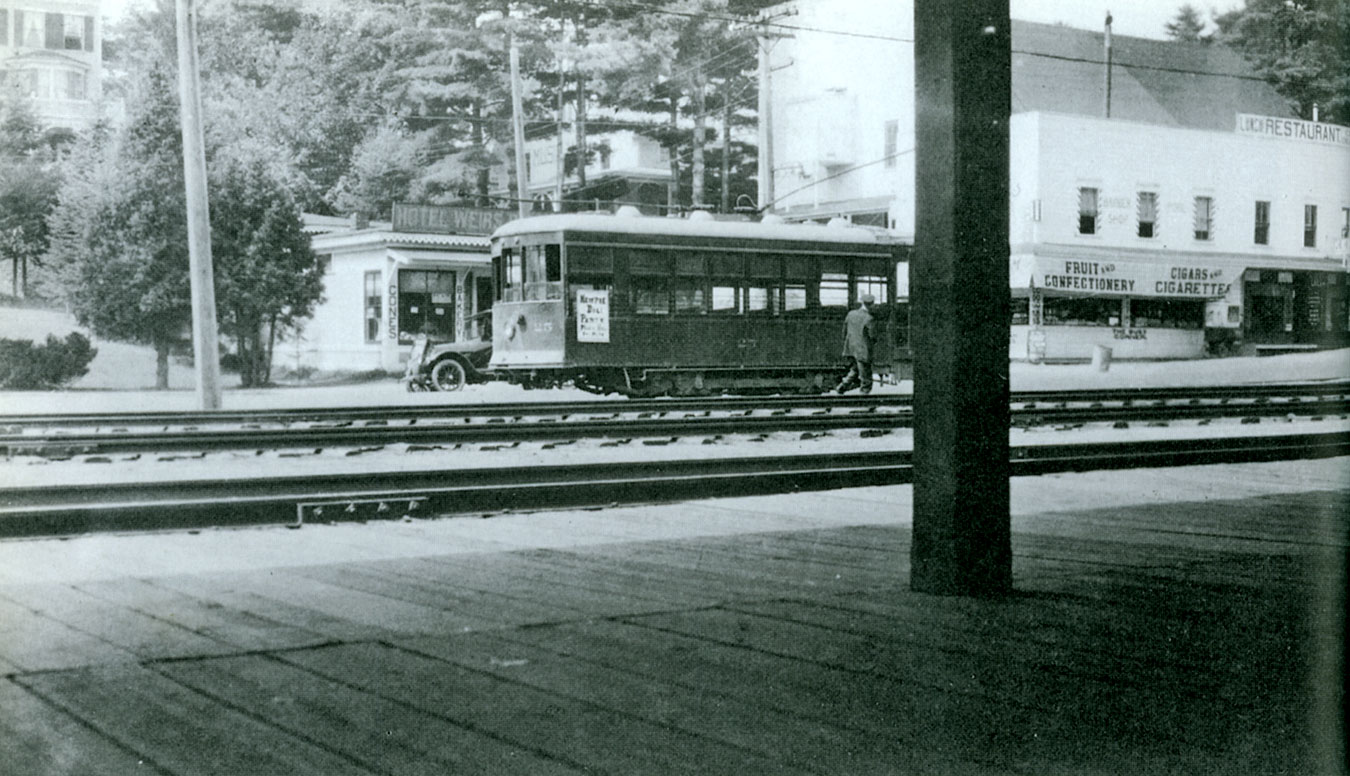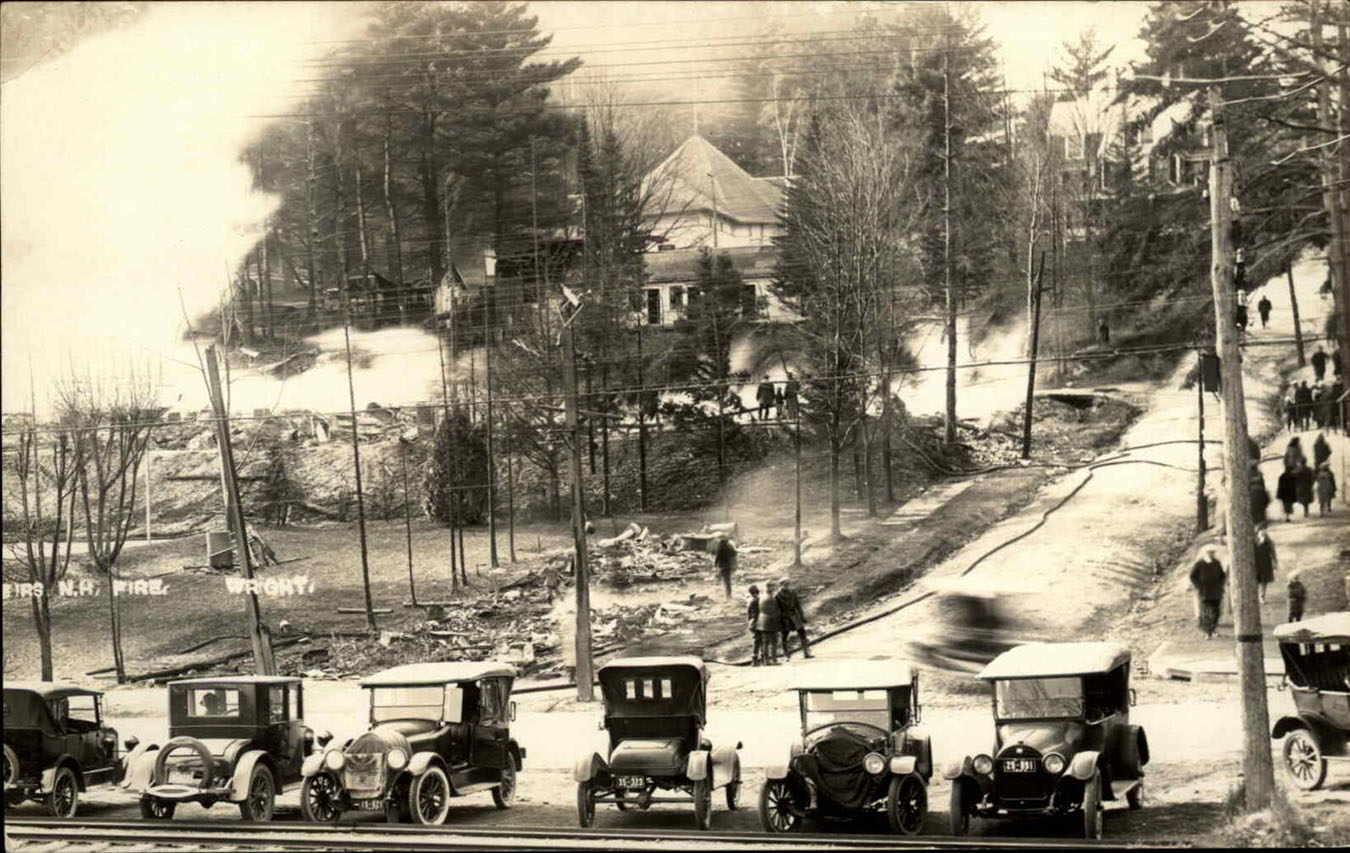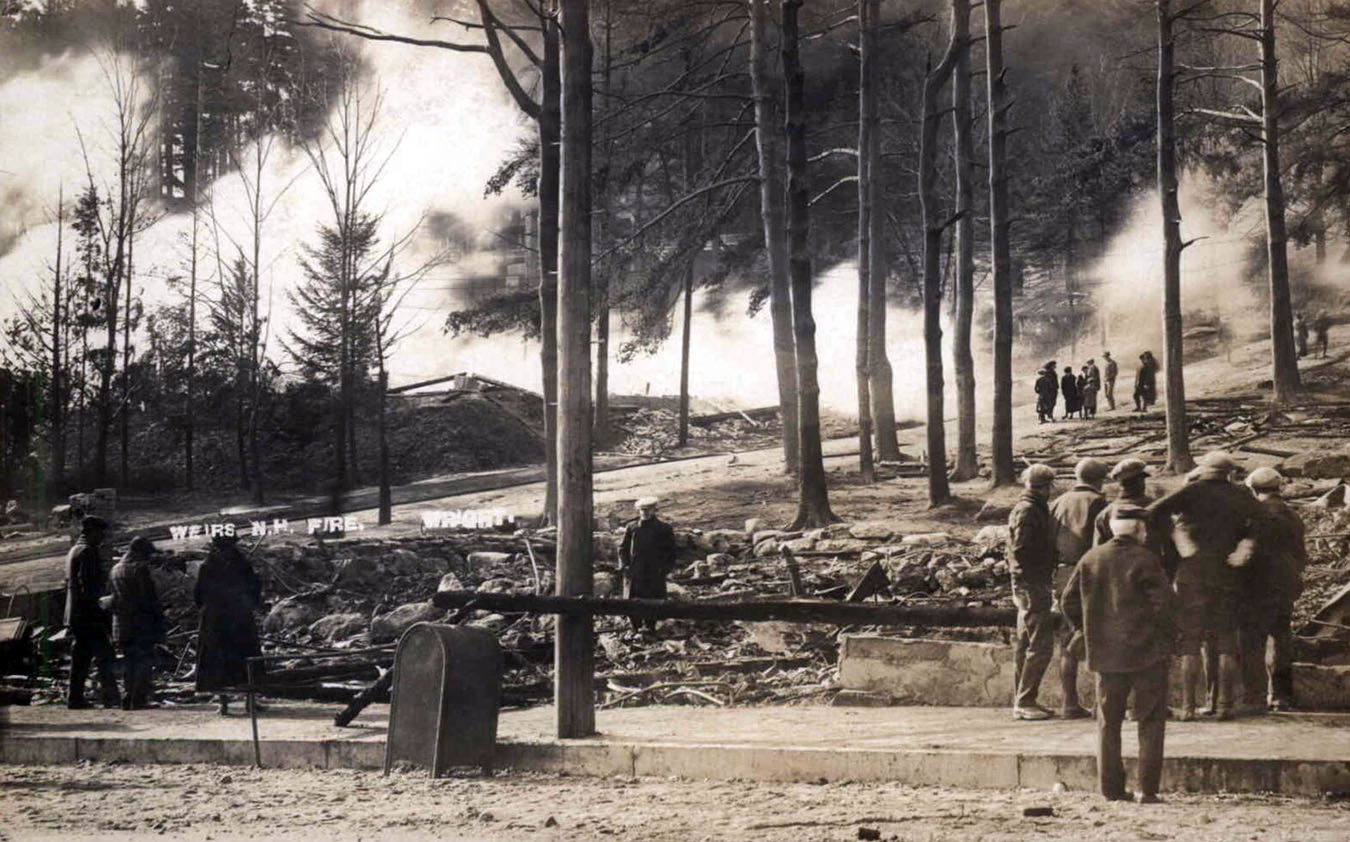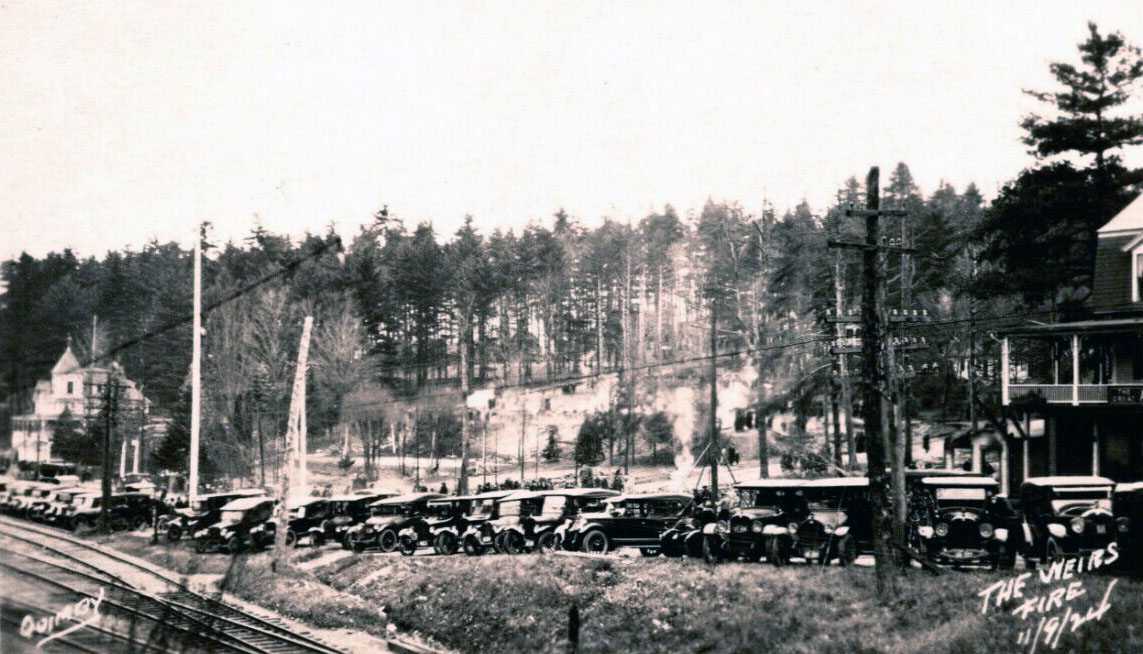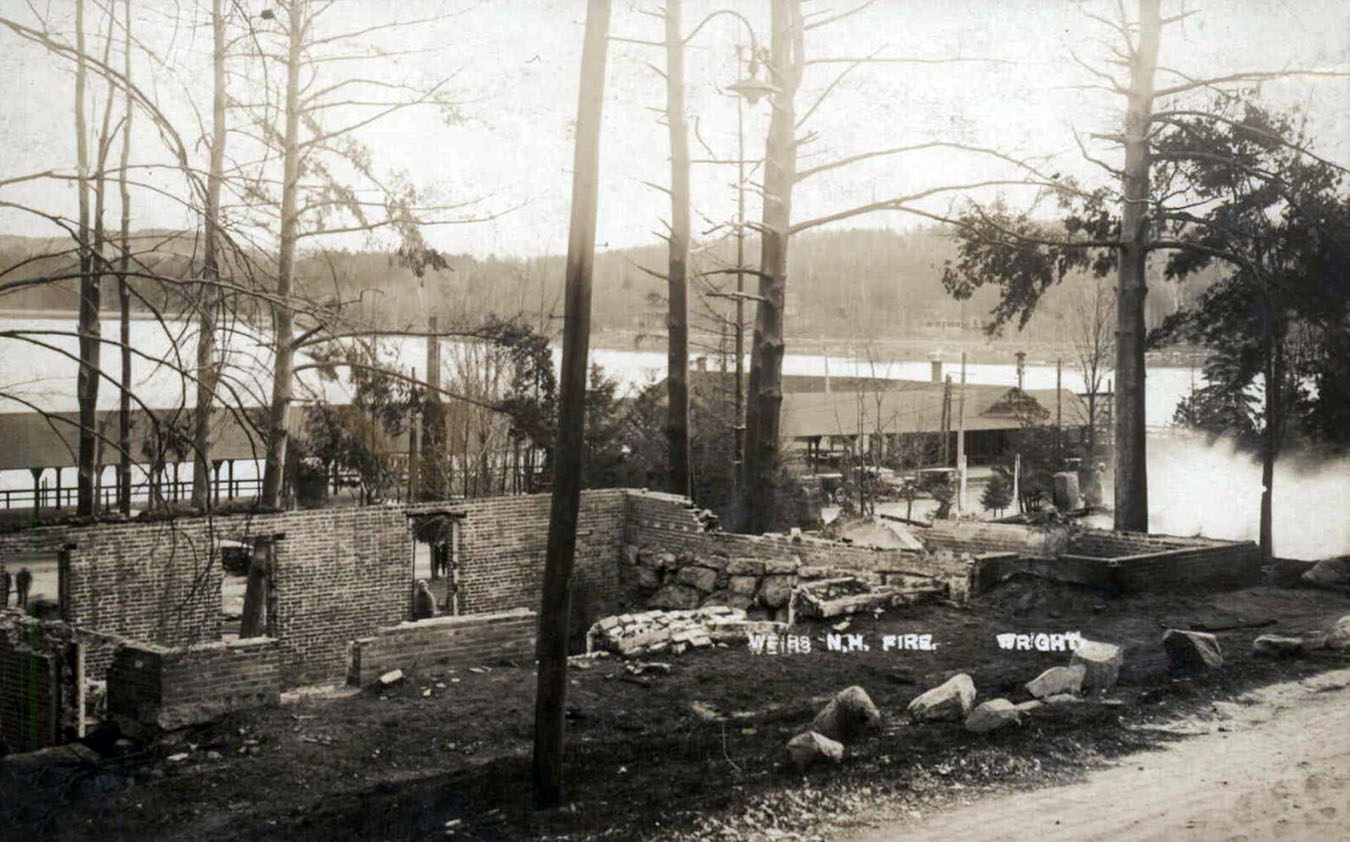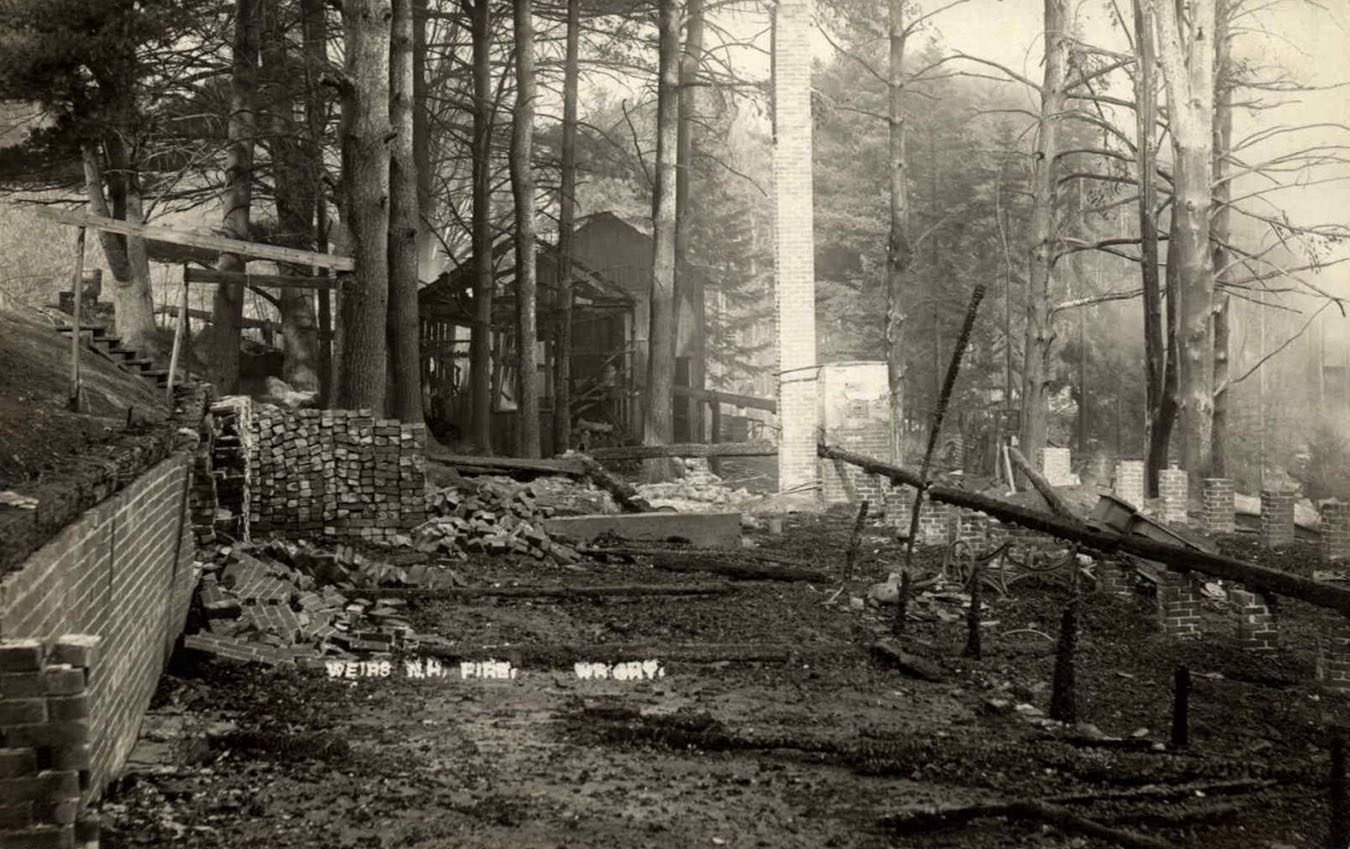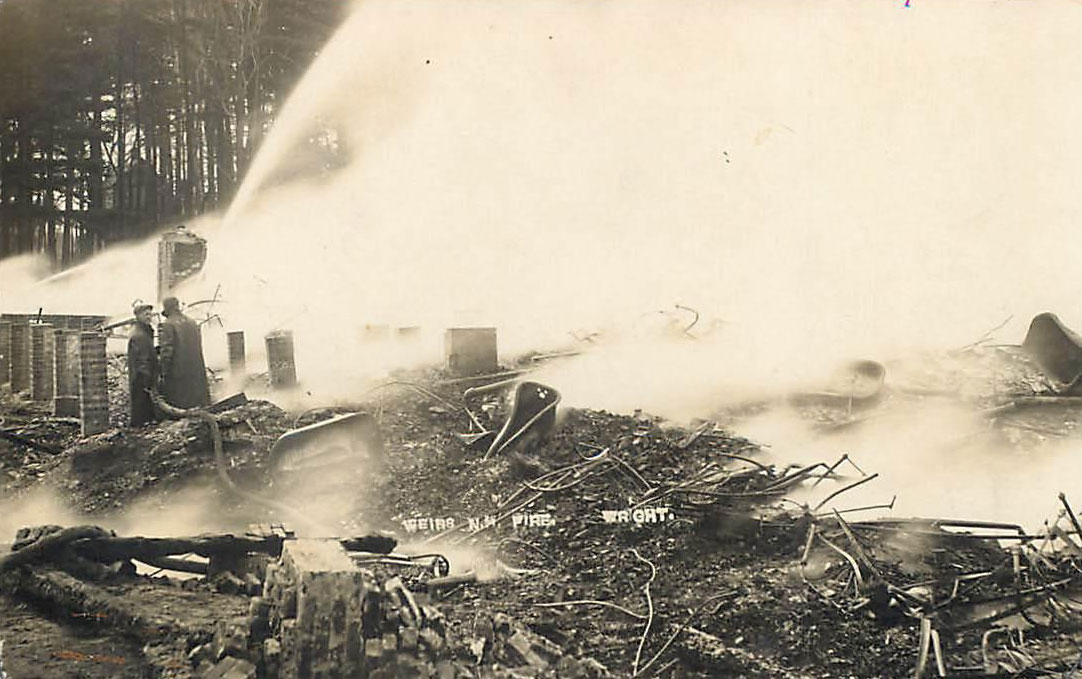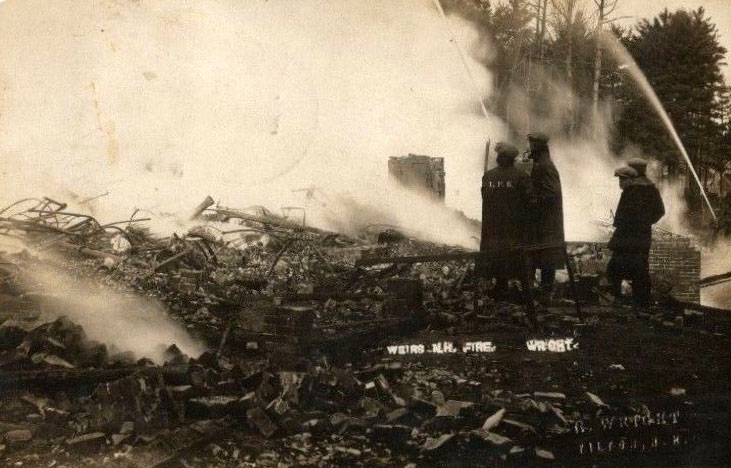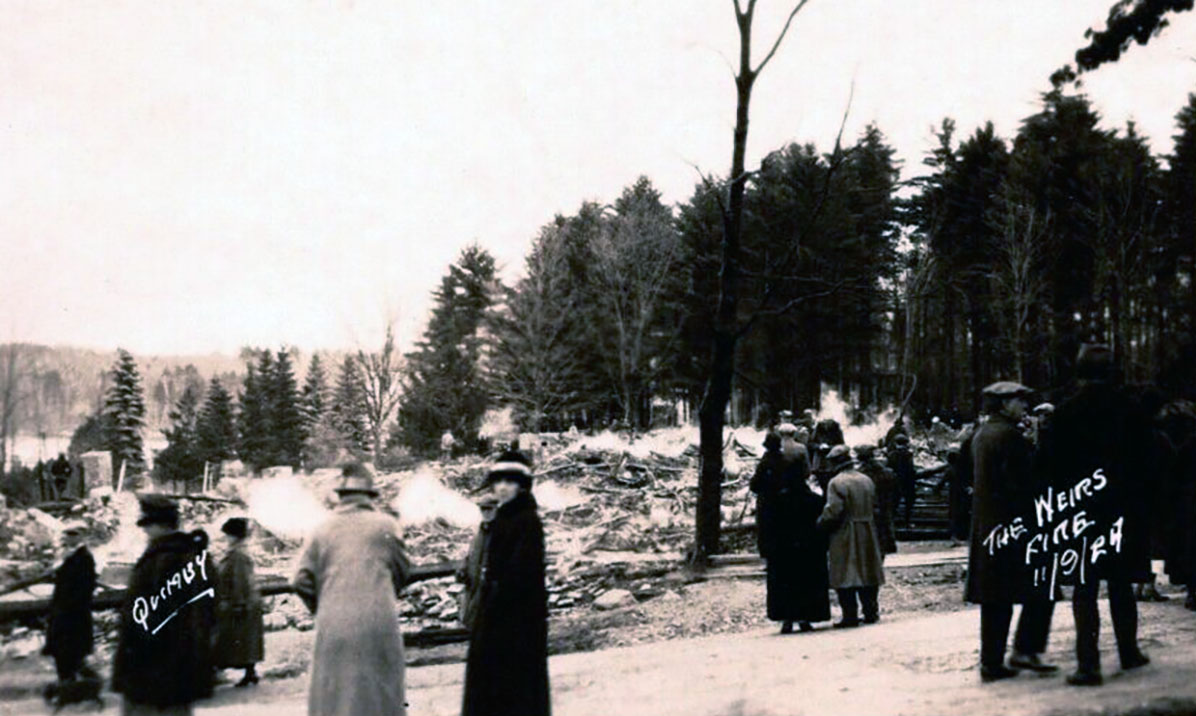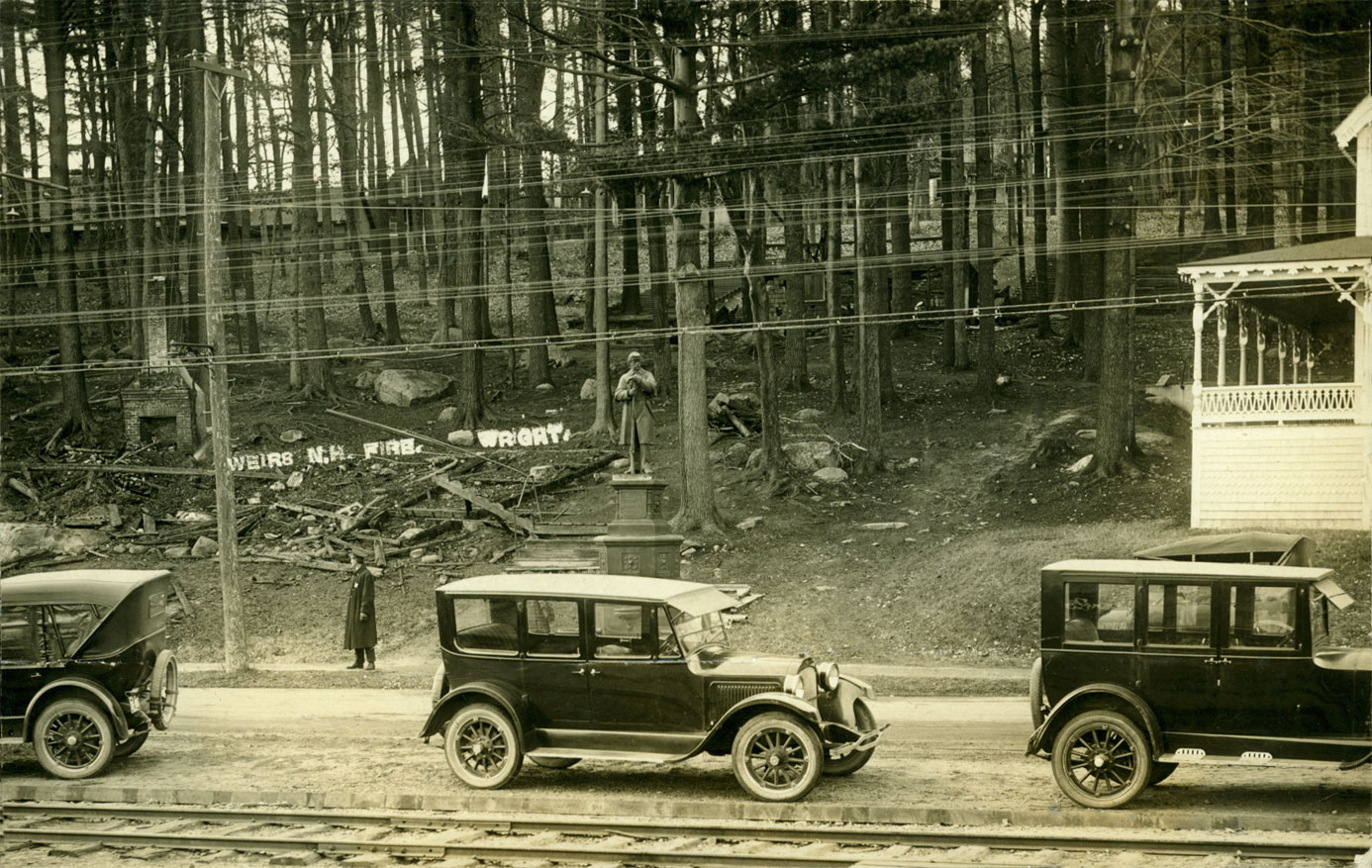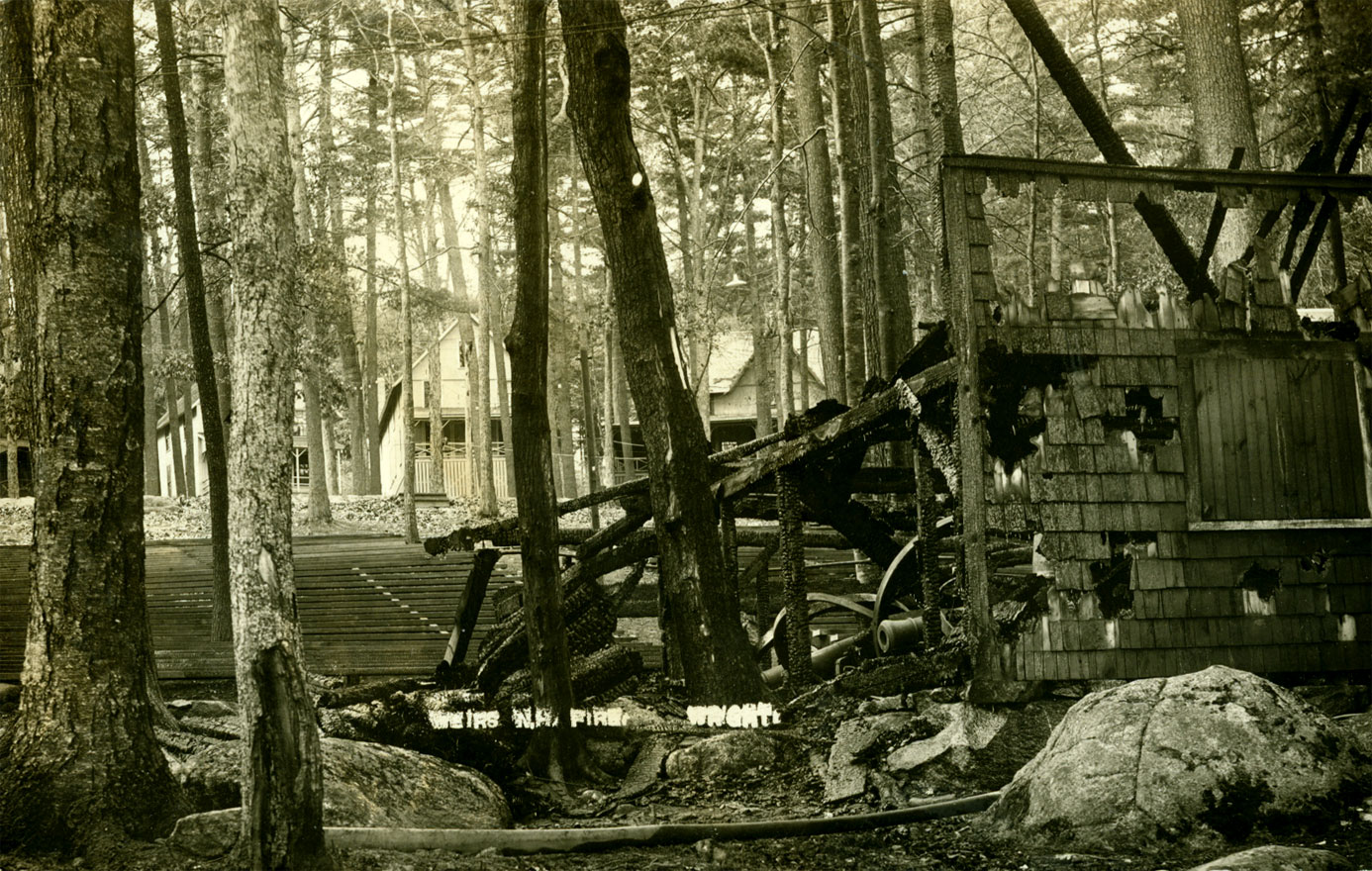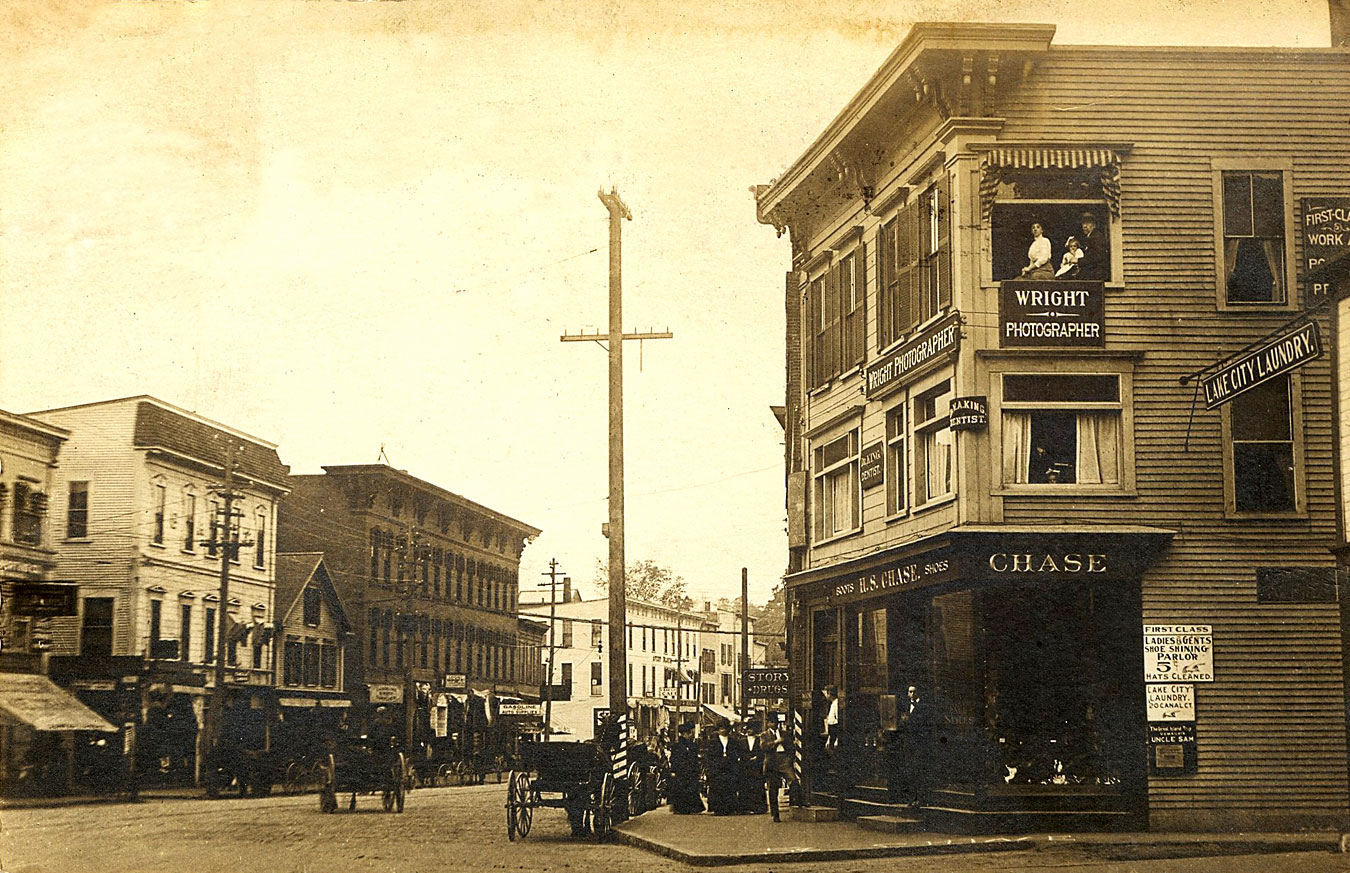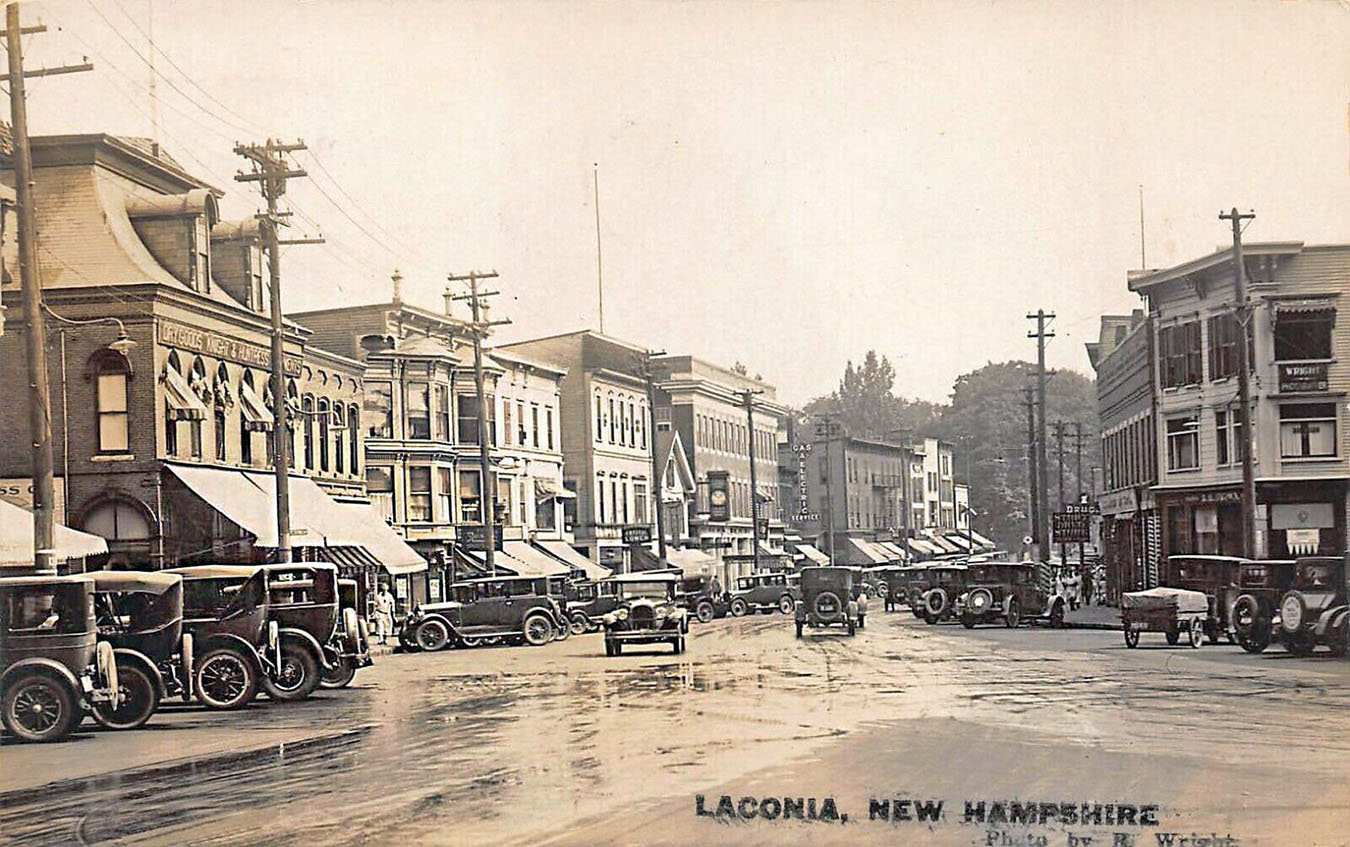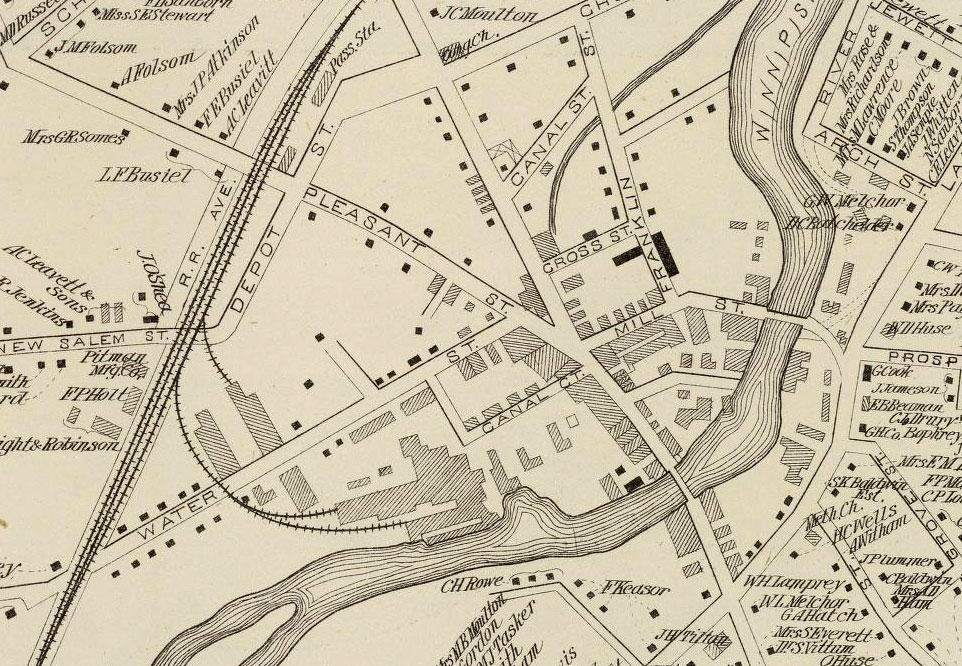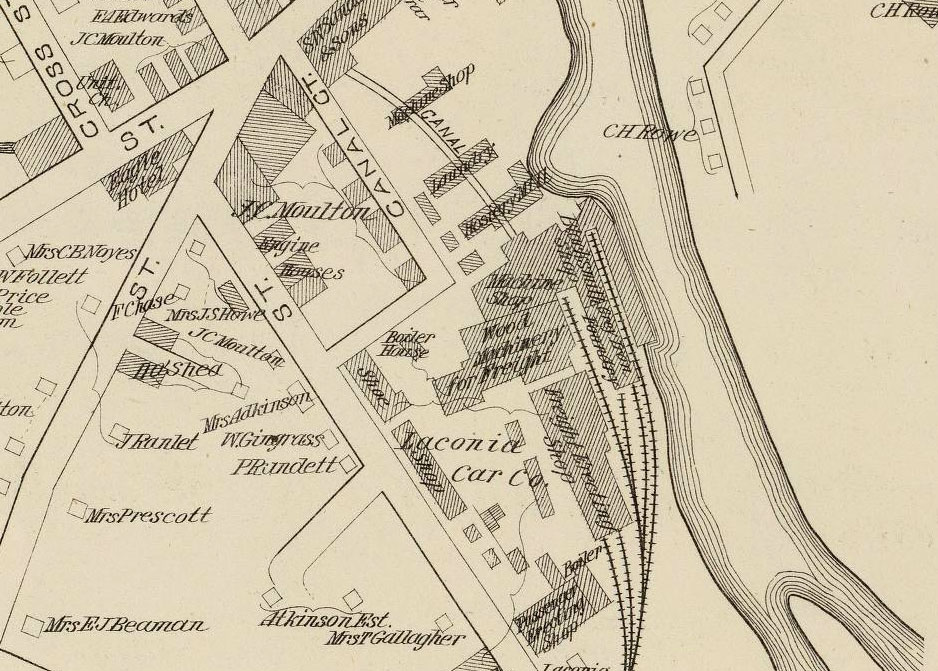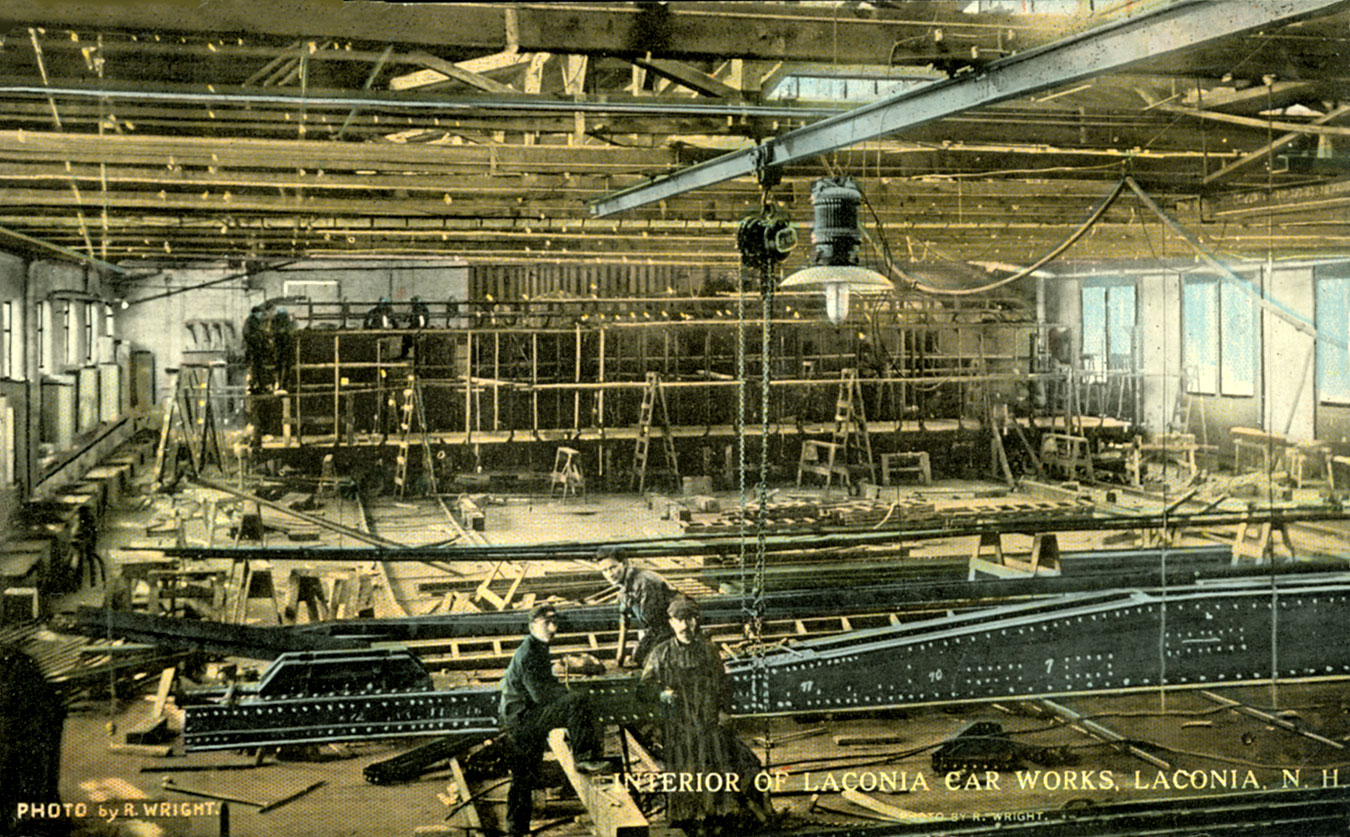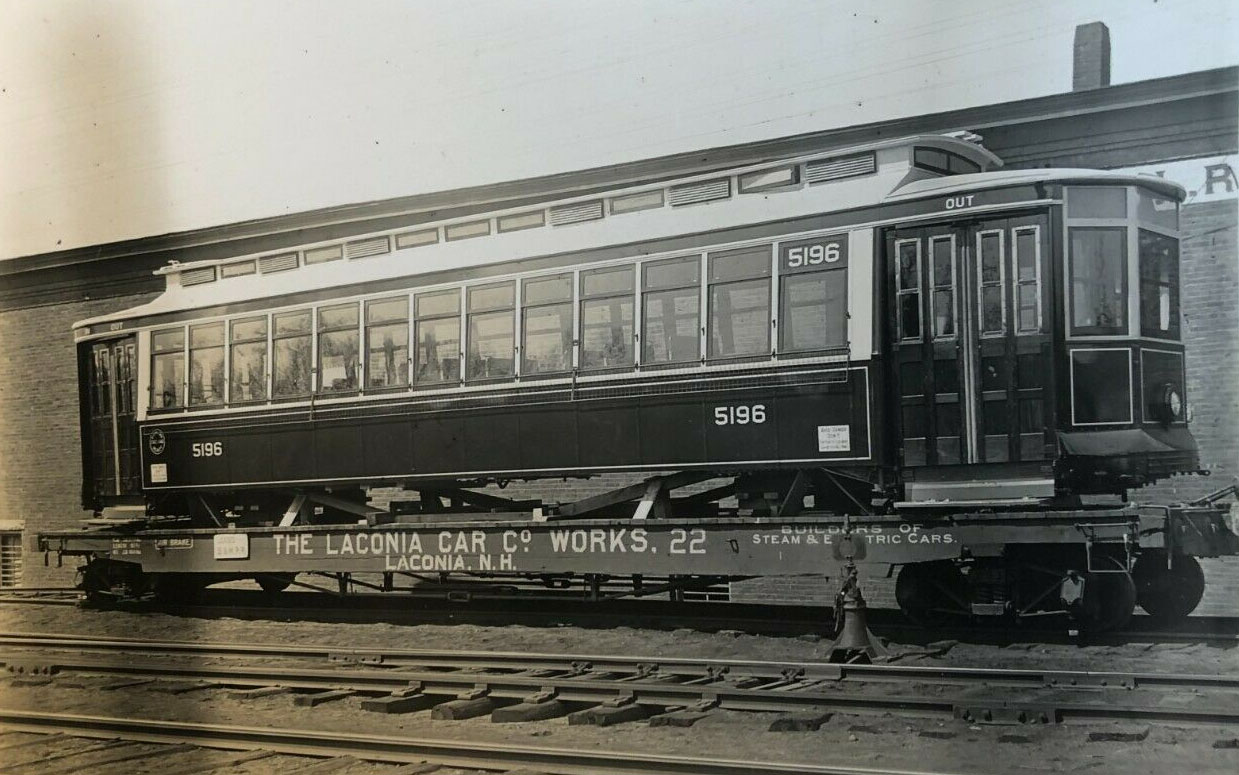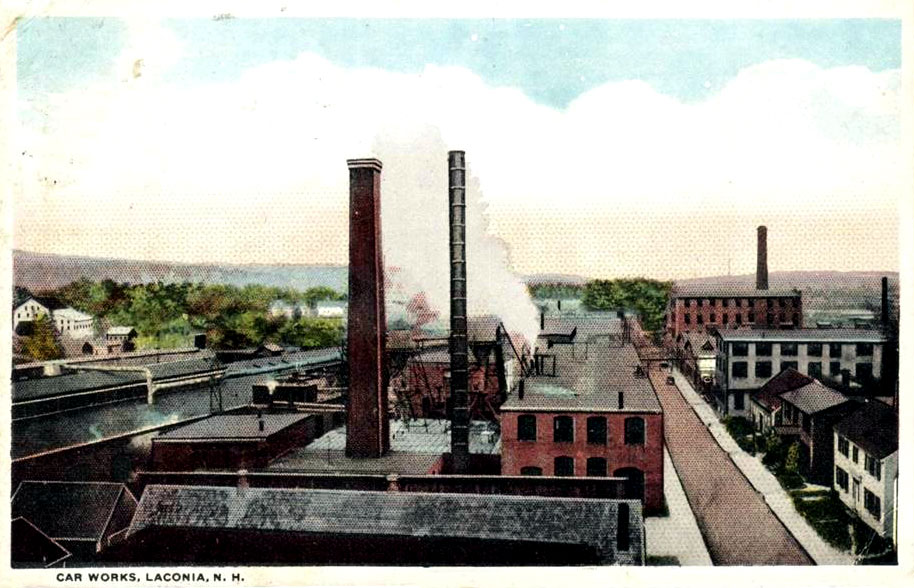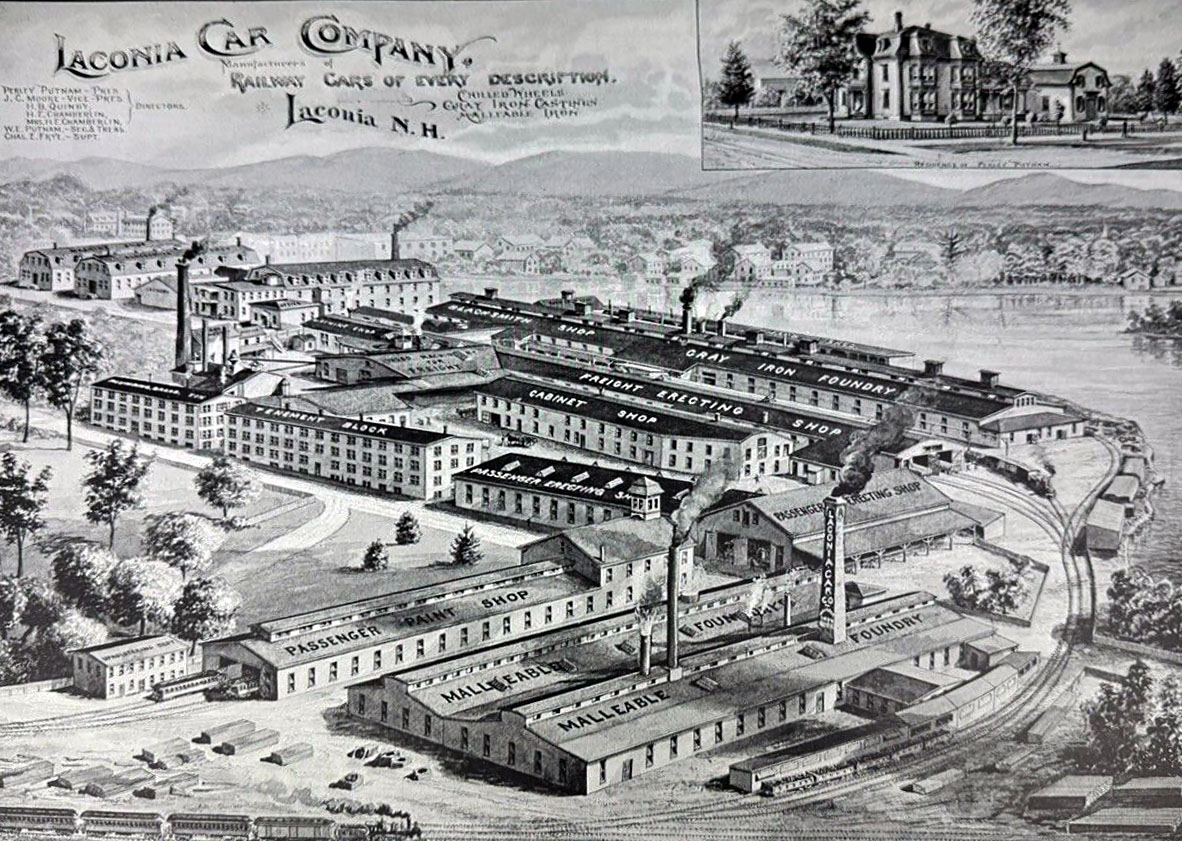Great Weirs Fire of 1924
The above composite photo shows the “conflagration and destruction”, as Warren Huse, the author of The Weirs puts it, of the Great Weirs Beach Fire of 1924. According to Huse,”Late in the evening of November 9*, 1924, the New Hotel Weirs and twelve other structures on Lakeside Avenue and Tower Street burned to the ground. The heat was so intense that the passenger station was set afire in many places. The steamer Mount Washington, tied up at the wharf, was kept under a stream of water. Although the Veterans Association Headquarters building on Lakeside Avenue was saved, the adjacent Third Regiment building was lost to the flames. By continuously playing heavy streams of water on the other Association buildings, which were showered with sparks, firefighters quickly extinguished the small fires. That the entire resort was not destroyed was acknowledged as a tribute to Laconia Fire Chief Arthur W. Spring.” An article describing the fire in detail can be read here. (*The fire was first discovered at 11:30pm on Saturday, November 8th, and raged through the early morning hours of Sunday, November 9th.)
Lost in the fire was the landmark New Hotel Weirs, a still-smoldering pile of rubble at the time of this photo. Destruction lined both sides of Tower Street, which extends up the hill at the center of this photo. Lost on the bottom left of Tower Street was the Hotel Weirs Delicatessen. On the right side of Tower Street, the 1903 Music Hall, where the fire started, lay in ruins, as did the next-door 1886 Methodist Church, and several other buildings at the bottom right corner of Tower Street. Saved from the fire, at the top center of the photo, was the Veterans Dining Pavilion.
A 1920 photo showing the building on the North corner of Tower Street and Lakeside Avenue that housed Kennon’s restaurant, a candy store and a tobacco shop. Looking over the trolley car and the Hotel Weirs Delicatessen, we can see through the trees to the “Music” sign on the Music Hall. A corner of the New Hotel Weirs can be seen in the upper left. All the buildings in the photo burned down in the fire.
Here is the foundation of the New Hotel Weirs after the smoking remains had cooled down, with the train station and boardwalk canopy visible in the background.
A view of the remains of the 3rd Regiment building. Note the Loammi Bean statue, which is not in its regular location. The statue had been temporarily moved from its customary place at the foot of New Hampshire Avenue, perhaps so as not to impede the work of fighting the Great Weirs Beach fire, or possibly to save the statue itself. Up the hill, behind the statue, are the remains of the Speakers Stand.
A closer view of the remains of the Speakers Stand. While the stand was clearly destroyed, the audience seating seems relatively unaffected. Note the cannon barrels protruding from underneath the stand. As the photographer noted on the reverse of this photograph, “Those pieces of metal at the left side of the Veterans Grandstand is what was left of the cannons. They are no good now.”
Photographer R. Wright Office
The office of the photographer who took these photos of the fire, R. Wright, was located at the corner of Main Street and Canal Court in downtown Laconia, as can be seen here in this view looking South on Main Street. Notice in the lower right corner of the photo, the little sign on the side of the building advertising “The Great Island Trip” on the U.S. Mailboat Uncle Sam.
Canal Court
As can be seen in these 1892 maps of downtown Laconia published by D.H. Hurd & Co., Canal Court (which no longer exists) connected Main Street to Water Street just above the manufacturing plant of the Laconia Car Company. The full scale maps can be found here at the David Rumsey Map Collection website.
Laconia Car Company
Here is a photo of the inside of an assembly building at the Laconia Car Company, by R. Wright, the same photographer as who took the fire photos.










